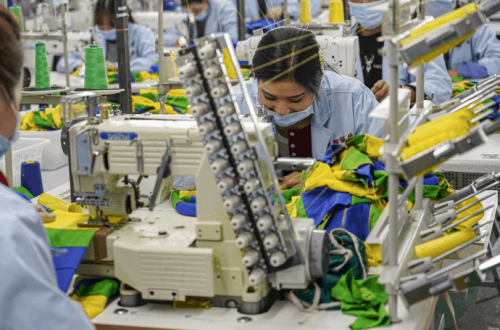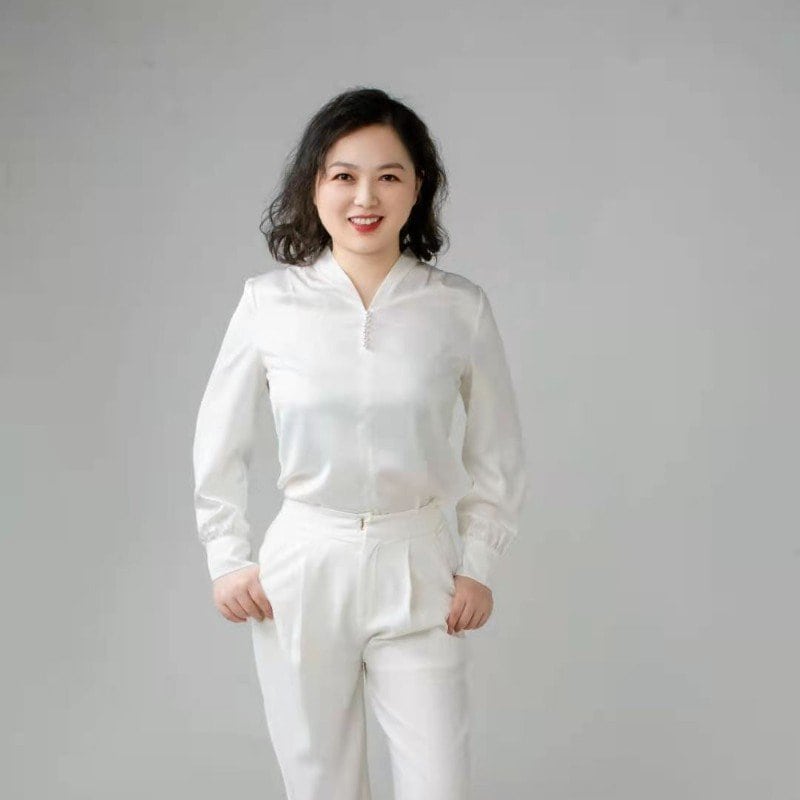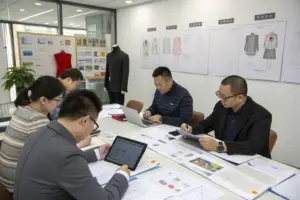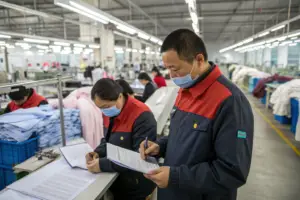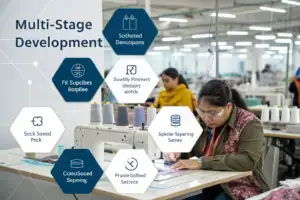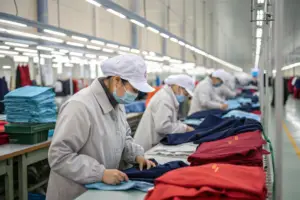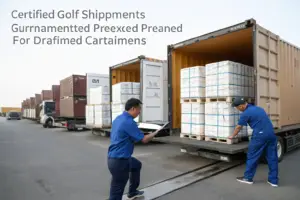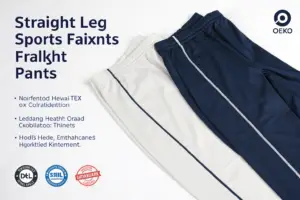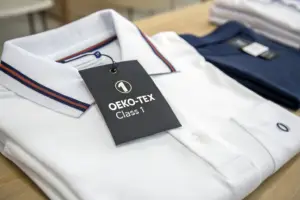Our team have many years of experience running a garment factory in China. And based on my observation, I noticed that novice clothing sellers and buyers lack an understanding of the garment factory. Hence, while in the transaction process, several communication difficulties are encountered. Having full knowledge of factories is necessary when running a clothing company. And as someone in the clothing manufacturing industry, the question now is how can the clothing manufacturers and the buyers both achieve a win-win situation?
The Outline
- Careful process in the initial stage of establishing a garment factory.
- Factors to consider when choosing reputable clothing manufacturers in China:
- Factory size
- Product class positioning
- The integrity of the boss
- Managing staff and labor cost
- Details to consider when online shops or wholesale retailers look for custom clothing manufacturers to transact with:
- Minimum quantity
- Quality control orders
- Payment schedule
- Impact of the epidemic on garment manufacturing industry.
- How to find suitable clothing manufacturers in China after the epidemic– A long-term partnership
Clothing is more than the beginning of the complex process of entrepreneurship.
I started my business in the second half of 2012 when I was 26 years old. Before I started my business, I was a fashion merchandiser, and I felt like I was muddling through. So when I accumulated a certain amount of resources, I began to pursue having my own business. Plus, being poor drove me to start my own company.
Some friends asked when we have a job, should we think about doing something to maximize self-value? After all, someone else’s job is always someone else’s. My answer is yes. Clothing manufacturers have the idea that each people in the garment industry have their own dream brand!
Poverty is, in fact, sometimes a good thing.
However, some people are too poor to have the courage to start a business. After all, starting a business also needs a lot of investment. Still, the desire to make money is a huge motivator.
I already had the resources when I decided to start my own business. I didn’t just do it off the cuff. When I first ventured, the first step I chose was to build a factory. After all, I have a technical background. Thus, setting up a garment factory is relatively easy for me to undertake. Technology has a lot of benefits. But in factories, I find that technology and handicraft are sometimes bad for the boss: the boss will ignore the company’s strategic direction because the focus is on technology and restrict the factory’s development.
In the early days of my business, I encountered some challenges. I learned that factories are the most complex part of the clothing supply chain.
At the beginning of my career, I endured a shortage of orders and employees. Sometimes the workers are full, but the orders are not; Sometimes, orders are packed, but the staff is not available, and both are affected. But I was lucky to have a few people at home to support me altogether.
Initially, we will deal with brand companies. But when the payment schedule arrives, it becomes the biggest problem for the factory. It usually takes two to three months for brands to pay the custom clothing manufacturers. Once the supply chain of the factory does not turn over, it will be challenging to maintain the garment factory. During those times, after meeting a brand company and originally agreeing to two months after the delivery of the payment, the money is unexpectedly delayed for two years. Therefore, we had to rely on credit cards to survive and cover our daily expenses.
In terms of orders, the advantage of my resources brings me some convenience. At that time, my former boss promised to give me orders, which gave me more opportunities than many entrepreneurs. I have also seen many bosses who have no orders and no employees. We explained to our new employees that we would have a guaranteed minimum salary and that the cash flow would last for three months, so I decided to consider the changes after that. At that moment, I planned to make no profit for one year. All the processing fees of orders would not be deducted at the early stage, and all would be paid to the employees.
I have the resources on the order side, so I only need to stabilize the workers in three months to get the cash flow back, which I consider. My main task was to organize and support the staff. Sewing workers were in demand at that time, and there was a shortage of sewing workers. Almost all clothing manufacturing factories were short of skilled sewing workers. Most of those sewing workers prefer to go where the pay is higher—few plan to stay for a long term while some hold on to the idea of leaving soon. So, staff maintenance and organization are essential.
In the early stage of a business, we need to withstand all the tests we meet. If there is no certainty, faith, and support, it is indeed not easy to stick to it. In addition, we should particularly pay attention to the supply chain, which should not be broken, and the basic security of employees, which should always be present.
1. Factory Scale
First of all, I don’t think you can judge a factory by its size. Large factories are relatively precise in all aspects of the management system and do better in quality control than small factories. However, the disadvantage of large factories is that people are overcrowded and the management cost is too high. It is also hard to adapt to the flexible production line of many varieties and small batches. This is also the reason why many companies now start to build small factories.
When it comes to the size of the garment factories, they are not in the same league as before. In the 1990s, factories employed tens of thousands of people. Now it is not simple to find a garment factory with hundreds of people. Only dozens of people are the norm in many garment factories these days.
And now there are fewer skilled workers in garment factories. One is because of personnel lapse. Those who remain are old employees. But older workers are rigid in their thinking, rarely think long-term, and don’t want to learn new skills. The current workforce is mostly in their 40s and 50s. Not many people make clothes in their 30s, and even fewer in their 20s.
A friend of mine once pointed out that the increasing automation of factories and the decreasing demand for workers are other contributing factors. At the same time, large orders are becoming less and less. Large factories do not adapt to the current market for orders, while small factories are relatively easy to change varieties. As the saying goes, “a small ship is easy to turn around.” In addition, compared with large factories, the management costs of small factories can be relatively controlled better, so the scale of factories is now reduced.
For clothing production automation, currently, custom clothing manufacturers in China can only do shirts and suits. Suits also involve a lot of craft that needs to be done by hand, as fashion is hard to automate. Especially for high-end customized clothing, the degree of automation is even lower. The more high-end the categories are the more demand for manual participation of clothing manufacturers. It is difficult for automated things to replace all the processes thoroughly.
Therefore, to find the best custom clothing manufacturers in China, one must look according to the order size and consider the factory’s corresponding scale.
If the order quantity is low, but you will opt for a large-scale garment factory, they will not take the order very seriously even if they agree to do the job. But if the order is relatively large and a small-scale factory is hired to do the order, the final delivery time will also be a big problem. Furthermore, we should not bargain with custom clothing manufacturers just because we think many processes are now automated. In fact, with the current technology, the degree of automation of clothing is not very high, and labor costs are still crucial.
First of all, I don’t think you can judge a factory by its size. Large factories are relatively precise in all aspects of the management system and do better in quality control than small factories. However, the disadvantage of large factories is that people are overcrowded and the management cost is too high. It is also hard to adapt to the flexible production line of many varieties and small batches. This is also the reason why many companies now start to build small factories.
When it comes to the size of the garment factories, they are not in the same league as before. In the 1990s, factories employed tens of thousands of people. Now it is not simple to find a garment factory with hundreds of people. Only dozens of people are the norm in many garment factories these days.
And now there are fewer skilled workers in garment factories. One is because of personnel lapse. Those who remain are old employees. But older workers are rigid in their thinking, rarely think long-term, and don’t want to learn new skills. The current workforce is mostly in their 40s and 50s. Not many people make clothes in their 30s, and even fewer in their 20s.
A friend of mine once pointed out that the increasing automation of factories and the decreasing demand for workers are other contributing factors. At the same time, large orders are becoming less and less. Large factories do not adapt to the current market for orders, while small factories are relatively easy to change varieties. As the saying goes, “a small ship is easy to turn around.” In addition, compared with large factories, the management costs of small factories can be relatively controlled better, so the scale of factories is now reduced.
For clothing production automation, currently, custom clothing manufacturers in China can only do shirts and suits. Suits also involve a lot of craft that needs to be done by hand, as fashion is hard to automate. Especially for high-end customized clothing, the degree of automation is even lower. The more high-end the categories are the more demand for manual participation of clothing manufacturers. It is difficult for automated things to replace all the processes thoroughly.
Therefore, to find the best custom clothing manufacturers in China, one must look according to the order size and consider the factory’s corresponding scale.
If the order quantity is low, but you will opt for a large-scale garment factory, they will not take the order very seriously even if they agree to do the job. But if the order is relatively large and a small-scale factory is hired to do the order, the final delivery time will also be a big problem. Furthermore, we should not bargain with custom clothing manufacturers just because we think many processes are now automated. In fact, with the current technology, the degree of automation of clothing is not very high, and labor costs are still crucial.
2. Customer Orientation
When looking for custom clothing manufacturers in China, it is best to discuss your purposes and inquire about the factory services. If these clothing manufacturers are mainly processing for big brands, they may not be interested in online orders. Even if they receive an order from the shop, the shop may not accept the payment if they follow the process of the brand order.
Now for the shop to have a long-term relationship with clothing manufacturers, it needs to understand the needs of the network business. For example, when our garment factory has online customers, we only ask customers to send samples. Then, as custom clothing manufacturers, we do other things such as purchasing materials and accessories and cutting, sewing, and finishing the whole package. In addition, we also help customers deliver goods on their behalf. We also do return and exchange and other after-sales assistance. So, our customers can concentrate on selling well.
To help customers deliver this kind of work, regular factories may not have the personnel to do the job, but it is best to operate in this way if dealing with the shop. After all, the online shop order needs 100% after-sales service. And to have after-sales service, the brand company must have a skilled person who can do the job. As for the factory, to help develop the cost of delivery and cost-effective labor, it must be calculated with the customers’ quotation. Our garment factory has a particular position for this job.
In general, clothing sellers must consider all things when looking for custom clothing manufacturers.
First, it is best to ask the main cooperative service partners of the factory which products they serve. Then, understand their main product categories, the grade, and the primary style of the clothes they produce. From thereon, determine if they are the ideal clothing manufacturers that can accommodate your products.
3. The Credibility of the Boss
The credibility of the boss is also a key indicator of how reliable a factory is. Clothing sellers may evaluate the credibility of the boss of a company. If they want to investigate the boss’s integrity, they can go to Baidu directly or even the company’s history to go over and check if they have any bad records.
4. Staffing and Managing Labor Costs
We can also determine whether a factory is good or bad by taking a look at its management. Staffing too much, or adopting a one-size-fits-all responsibility structure, may look and feel formal, but it also increases administrative costs.
If the factory management costs are too high, the processing fee quoted will be higher than the peers. But if the factory is just cutting costs, key positions are not covered and cannot cooperate. Quality control positions, in particular, are being removed in many factories. Whether a garment factory can produce good quality products has a lot to do with the boss’s quality control awareness.
Standard factories should follow three inspections level for quality control, such as before, during, and after. This is the most fundamental, but quality control does not provide direct benefits; hence, some factories will shrink. But if the boss only focuses on production capability and saves costs in quality control, he cannot cooperate.
I mention this matter because we can say that 80% of the factories now lack the position of QC. After all, for clothing manufacturers, it must be the output that produces the benefit. But for cooperative businesses, quality is the most important, and these two matters need to be balanced. In terms of workmanship, the overall quality control of the current garment factory is in decline compared with previous factories.
Not only quality control, but it also includes many management systems in the field, which are from the textile industry. From a tailor’s point of view, it is tough to do an excellent job without three or five years of experience. But how many people survive a three-year apprenticeship these days? So, I have analyzed the reasons for the decline in the overall quality. It is difficult for modern people to have the patience to learn how to make clothes. On the other hand, because the factory is getting smaller and smaller, quality control cost is reduced a lot.
This section mainly discusses how the seller can understand the actual situation of the clothing manufacturing company from four perspectives: the size of the factory, the clients of the factory, the credibility of the factory owner, the staffing, and the management cost of the factory. Before looking for custom clothing manufacturers to book, it is vital to understand these four aspects, critical for a long-term and harmonious partnership in the future.

